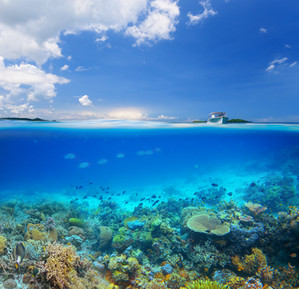Supplementing the Ocean
- Jennifer Depew

- Dec 12, 2018
- 2 min read
Updated: Dec 23, 2018
To return to the series about low oxygen areas in the ocean, supplementing the ocean with the addition of mineral oxides, discussed in Baking Soda to the rescue! - Yes really, might need to be done gradually with regular small amounts delivered over a wide area - like crop dusting over a large agricultural field, or in time release capsules like vitamin supplements or medications that dissolve gradually. Agricultural runoff in part causes phytoplankton/algae blooms because the runoff is occurring in bursts during certain phases of the growing season when agricultural fertilizing occurs.
Precision agriculture strategies work to reduce runoff by using more precise timing and delivery methods so less fertilizer is needed and more will be used by the plants. Fertilizer is needed by the roots so application methods that work it into the top layer of the soil help increase uptake by the plant roots and decrease runoff at the soil surface.
See: What are the 4Rs?, "Right fertilizer source at the Right rate, at the Right time and in the Right place." NutrientStewardship.
Similar concepts might help with trying to reoxygenate ocean dead zones without causing another algal bloom, die-off, and another round of decomposition bacteria using up the oxygen that the algae created. Gradual application rather than a single large amount of something like the experimental use of iron would be a Right rate. Magnesium oxide could be delivered to various ocean layers by dropping quantities packed in biodegradable containers that gradually release the magnesium or containers that withstand different amounts of pressure so some open sooner or later than others within the ocean depths.
Magnesium oxide or an aerating bubbler system of some sort might be the Right fertilizer source. Upwelling tubes would provide nutrients from the ocean floor but wouldn't necessarily provide oxygen if they were in an oxygen dead zone. Combining upwelling tubes and an aerating bubbler system could provide nutrients and oxygen. Incorporating aquaculture mussels or seakelp or aquaculture of shrimp or small fish that eat phytoplankton would help prevent overgrowth of algae from too much nutrients or oxygen.
The Right time might be when the natural growing or spawning cycles occur for species that would eat phytoplankton, for a goal of repopulating the dead zones.
The Right place might be within areas of the dead zones where there is an active current to help spread the oxygen bubbles or magnesium oxide farther.
The Right place for upwelling tubes might also include areas where we want to maintain the (thermohaline) ocean current patterns that circulate now. Europe and the U.K. enjoy warmer weather than would occur if the deep ocean currents that exist changed significantly. See: Deep Ocean Currents (Global Conveyor Belt), HowStuffWorks.
The series: 1. Oceans need oxygen, 2. Oxygenating the ocean's dead zone, 3. Non-traditional windmills can increase efficiency, 4. Upwelling tubes, hurricanes, and mussels. 5. Baking Soda to the rescue! - Yes really. 6. Supplementing the Ocean, 7. Mussels - Delicious and Sustainable. 8. The big picture of climate change is bigger than businesses may consider. 9. Inventions Occur in Stages. 10. Stacked Horizontal Turbines. The series in one document, minimal images, on Google-docs: (Oxygenating the Ocean).
Disclaimer: This information is provided for educational purposes within the guidelines of fair use.





























Comments